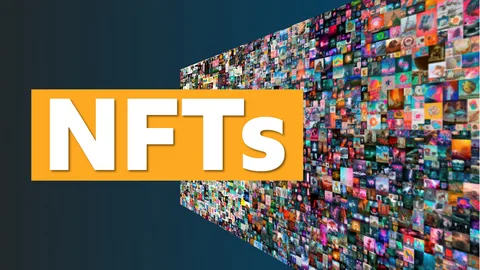At the beginning of 2022 it seemed as if soon, every video game would feature NFTs. The major studios such as EA, Zynga, Niantic, Ubisoft, Square Enix and Take-Two Interactive all said that they were looking for ways to add NFTs into their games. NFTs were supposed to replace everything from character skins to loot boxes. But a mere 12 months later, the tune has changed.
Fair Go Casino players and other gamers objected that they wanted to separate real money gambling from their video gaming events. Increasing numbers of gamers started to vote with their pocketbooks by spending more money on non-NFT games than those with the NFTs. Gaming companies listened and as 2023 gets underway, it seems clear that the once-bright-NFT-star has fallen.
NFTs, non-fungible tokens
NFT Games include non-fungible tokens that are cryptographic assets found on a blockchain. Metadata and unique identification codes distinguish them from each other. They cannot be exchanged or traded at equivalency. They can represent real-world items like real estate and artwork. By “tokenizing” these real-world tangible assets, it’s easier to buy, sell and trade them.
When NFTs became popular collectors sought them as their value soared by in the last few months their value has moderated.
Like cybercurrency, NFTs are created through minting. This means that the NFT information is published on a blockchain. The formation of a NFT is validated by a validator and the information is recorded. Smart contracts assign ownership and manage the transferability of the NFT. Every token has an owner and the address in which the minted token resides is publicly available. Each token has its own unique identifier and they can be distinguished from one another.
Here’s an example. You buy a picture. That transaction is encoded onto the non-fungible token permanently. When you sell the picture on a NFT marketplace (OpenSea, Rarible, NBA Top Shot, SuperRare, Nifty Gateway, Binance, etc) the new owner is logged on the blockchain. In this way investors and traders can bid on content.
However, there’s no regulation. At the same time, an NFT can represent anything which is why video game studios have been trying to integrate NFTs into their games.
Problems
There are a lot of problems with NFT tech. There are a lot of scams in the NFT market including pump-and-dumps (where promoters “pump” up the price of an item to create a speculative frenzy and then “dump” them at artificially high prices) and rug pulls where, following the announcement of an NFT project, investors buy in and the founders pull out the rug and disappear. There are rumors that some NFT artists are bidding on their own work anonymously to artificially inflate the price or even to launder money.
Ethereum is the cryptocurrency used most often to buy NFTs but much of Ethereum’s value has been wiped out which brings its valuation back to 2021 levels. Recent massive crypto market crashes have reduced the value of many people’s NFTs and a number of celebrities who promoted NFTS publically (Jimmy Fallon, Gwyneth Paltrow, Madonna, and Justin Bieber) are being sued.
NFTs in Games
NFTs enable gamers to acquire ownership of in-game items which takes those items out of the hands of a game’s publisher. Such items can, in theory, be used across games. In such a gaming environment, the player can acquire NFTs as they accumulate resources while playing the game. These NFTs may include in-game assets or currency. Like other digital assets, NFTs can then be traded in a secondary market or stored in a digital asset wallet.
Gamers are pushing back against NFTs. Soaring prices mean that, theoretically, it could cost hundreds of dollars just to start playing an NFT game. With the way NFTs are being incorporated into games, the player is often asked to invest upfront. It’s an unregulated, decentralized market which means that it offers scammers and fraudulent actors endless opportunities to take advantage of people.
Gaming Companies
Ubisoft started the move towards NFTs at the beginning of 2022, announcing that it would start giving away “Digits” — blockchain-based in-game add-ons in its Ghost Recon Breakpoint. Gamers accused Ubisoft of engaging in a shameless cash grab.
One critic, freelance games journalist Laura Shortridge-Scott of Scotland, told Polygon that falsely promising ownership to convince people to buy into the concept of NFTs is a tactic that gaming companies may be trying to develop but it doesn’t make any sense.
“I think most gamers understand digital content enough to know [ownership is] never guaranteed,” said Shortridge-Scott. “Whether you buy a World of Warcraft mount or a World of Warcraft NFT, you know it’s only yours for as long as the game World of Warcraft exists.”
By April Ghost Recon Breakpoint had stopped receiving updates. It was reported that, in the first three months that Digits were available, fewer than 100 players ever sold those NTFs. Ubisoft was also forced to face an unexpected paradox – in the end, there’s really no point in complicating in-app purchases by forcing players to sell and buy crypto with insecure and confusing crypto wallets.
Molly White, writer of Web3 Is Going Just Great and crypto critic told Polygon “The idea of NFTs being useful for gaming in a way that buying items currently somehow isn’t already — that has never been explained to me in a way that makes any sense.” Having digital goods follow you from one platform to the next isn’t currently possible and isn’t even logical. “Why would you want to have a Call of Duty rifle in Animal Crossing?” White said.
Bust
In the end, it was the crypto market going bust that convinced the gaming companies to abandon their plans for NFT games. The Web3 revolution hasn’t materialized and world blockchain technology is keeping investors awake at night. For now, NFTs, especially in the gaming world, seems to be relegated to the “not now” shelf.









